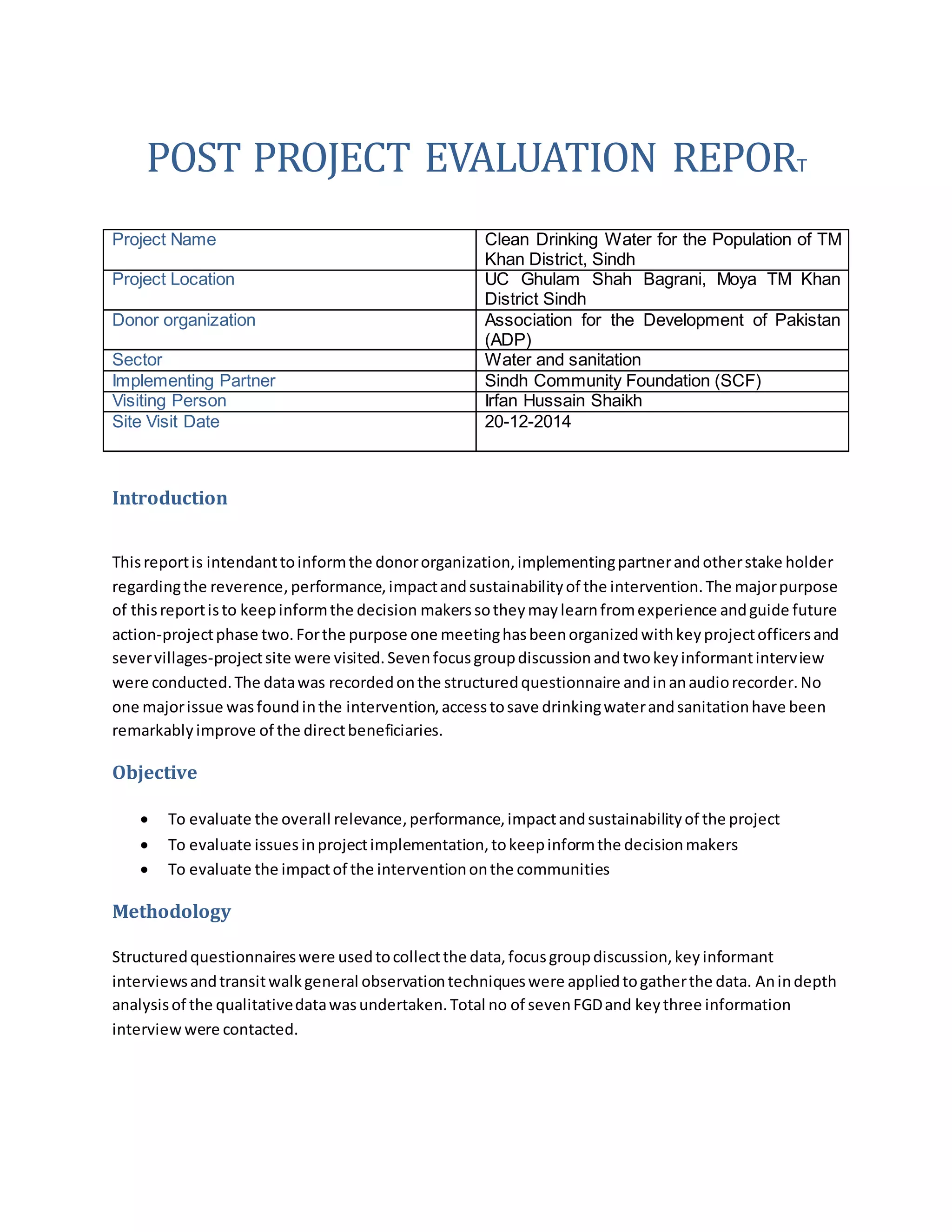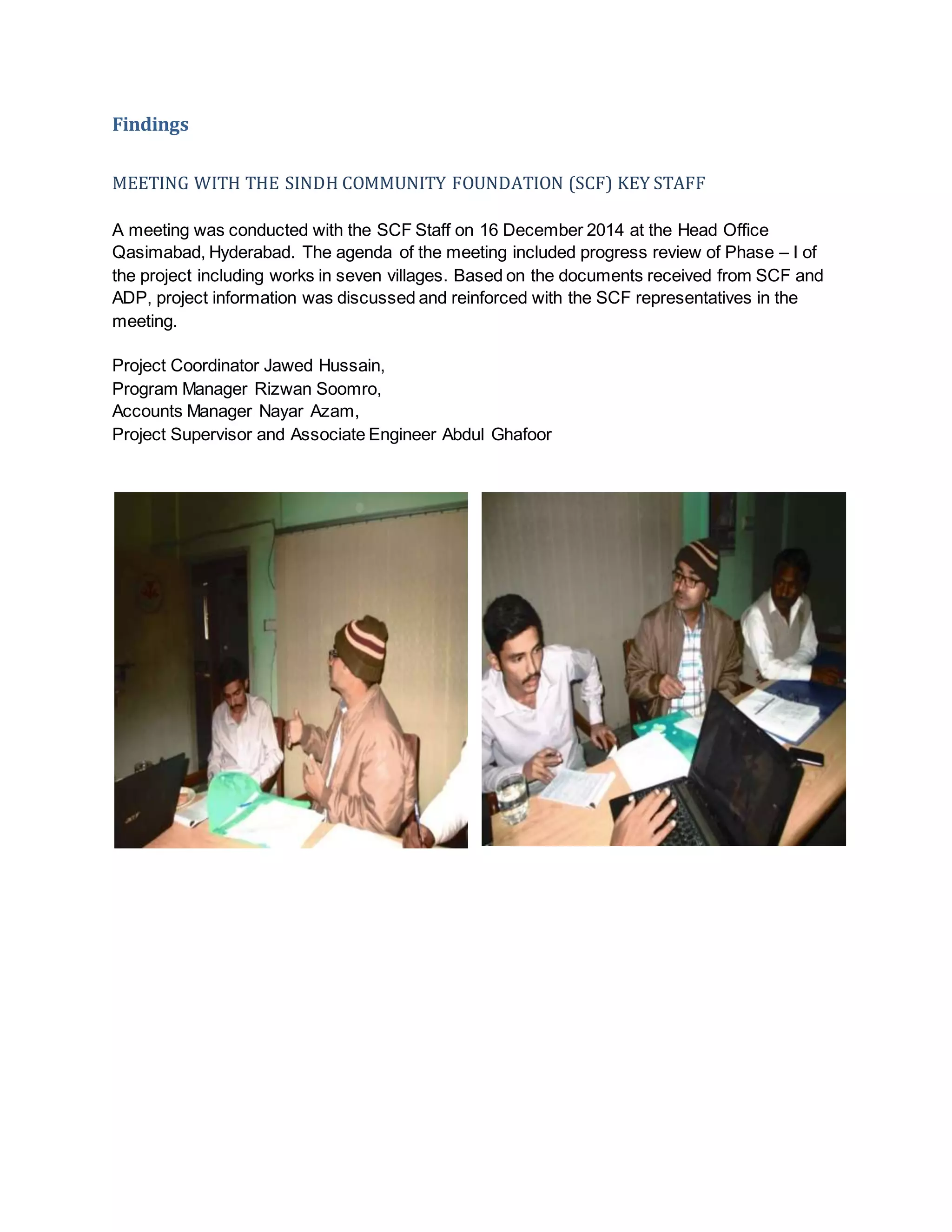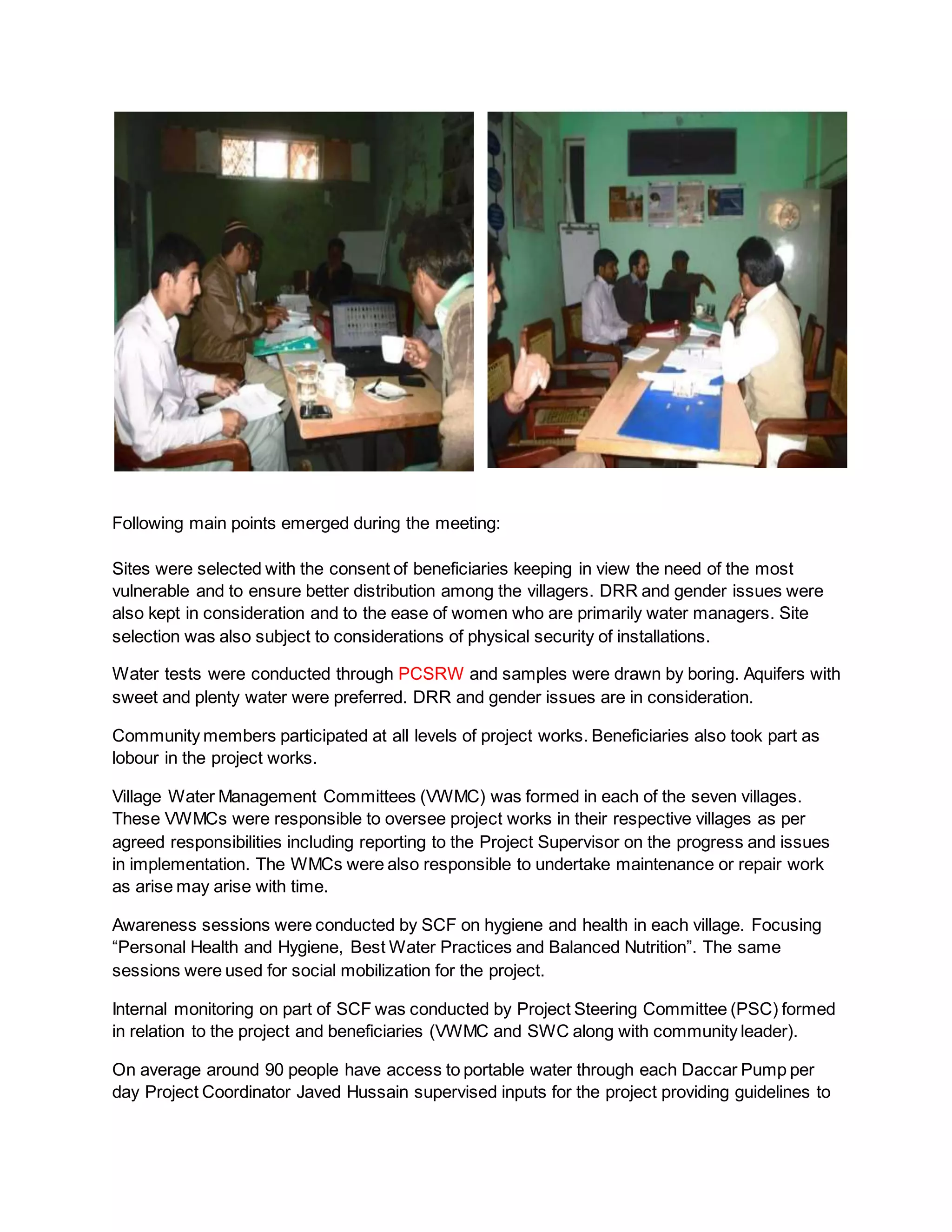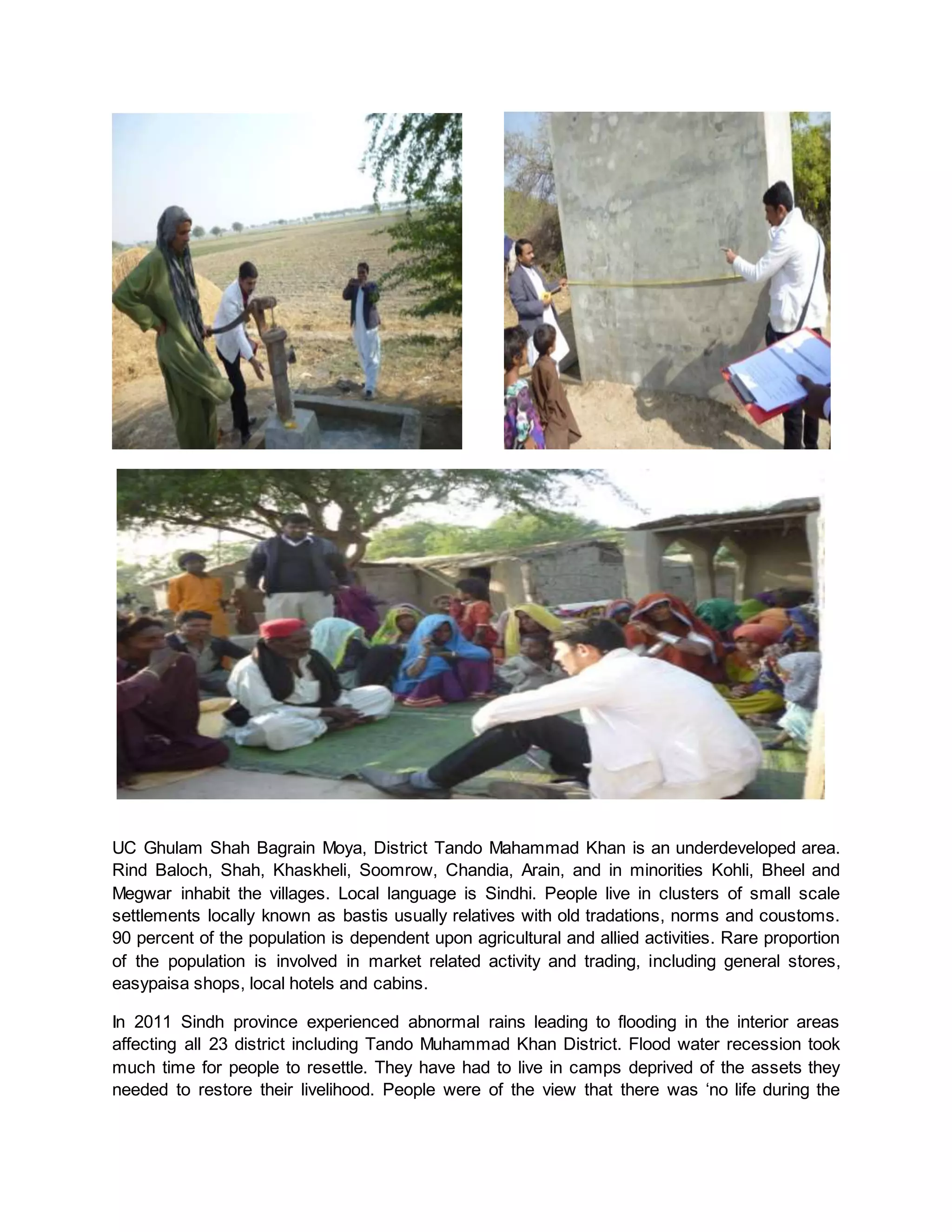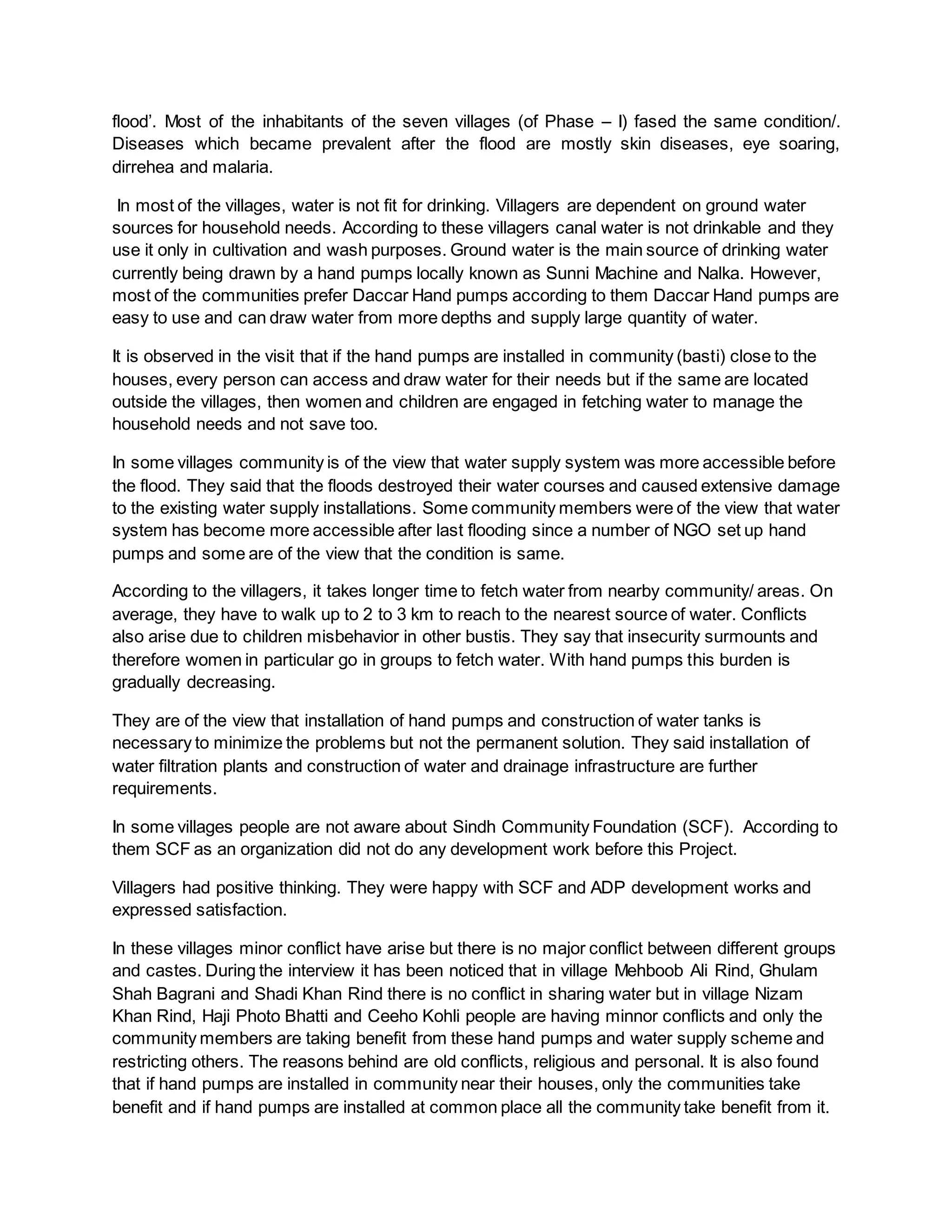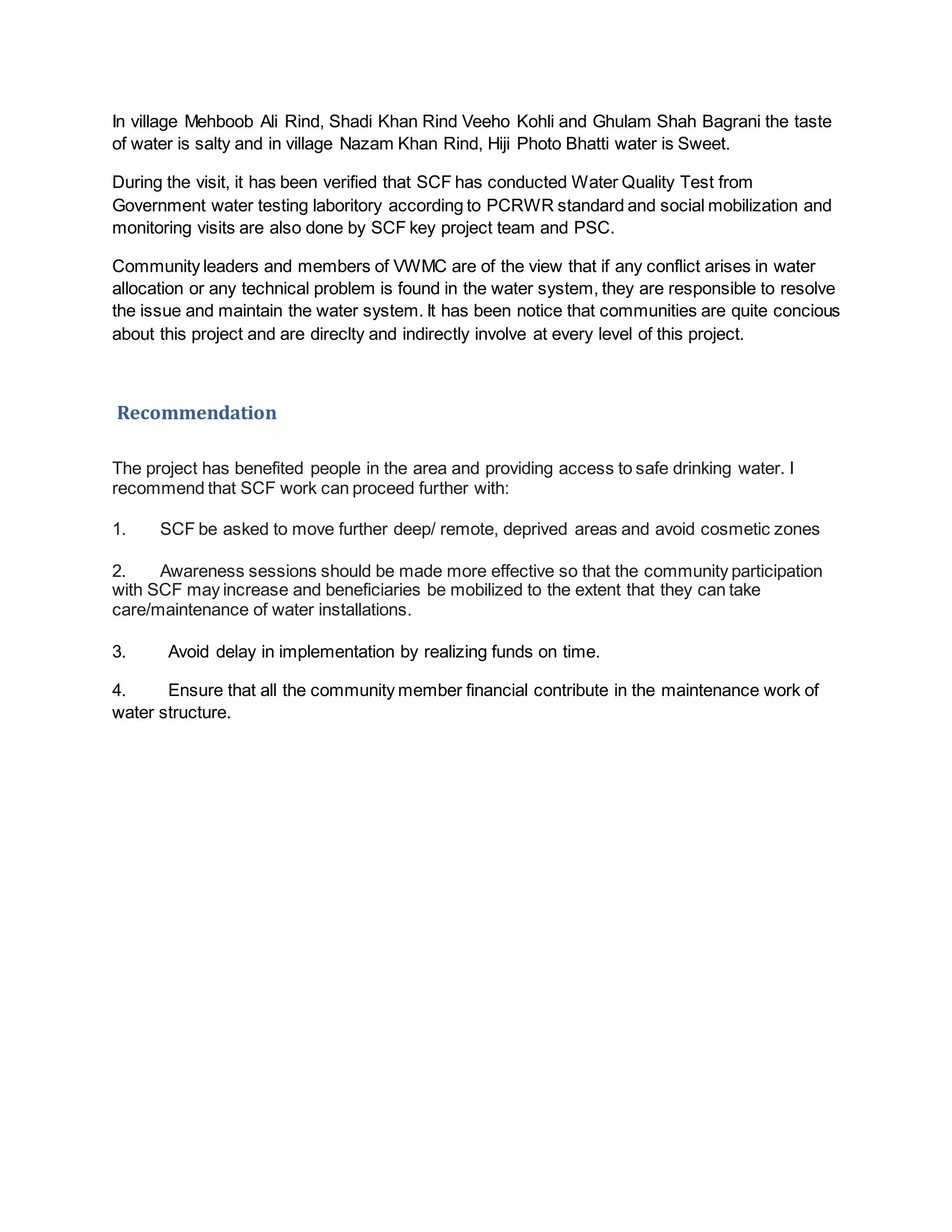The site visit evaluates a project that installed handpumps and water supply schemes in 7 villages affected by flooding. Physical verification found that most infrastructure was operational. Focus groups discussed project benefits and challenges. Villagers now have improved access to drinking water but feel additional infrastructure is still needed. Some conflicts emerged over water access between communities. The project overall increased access to safe water, but sustainability may require continued community management and awareness efforts.
